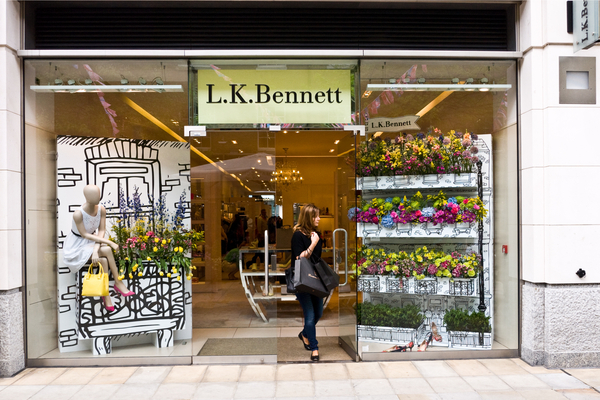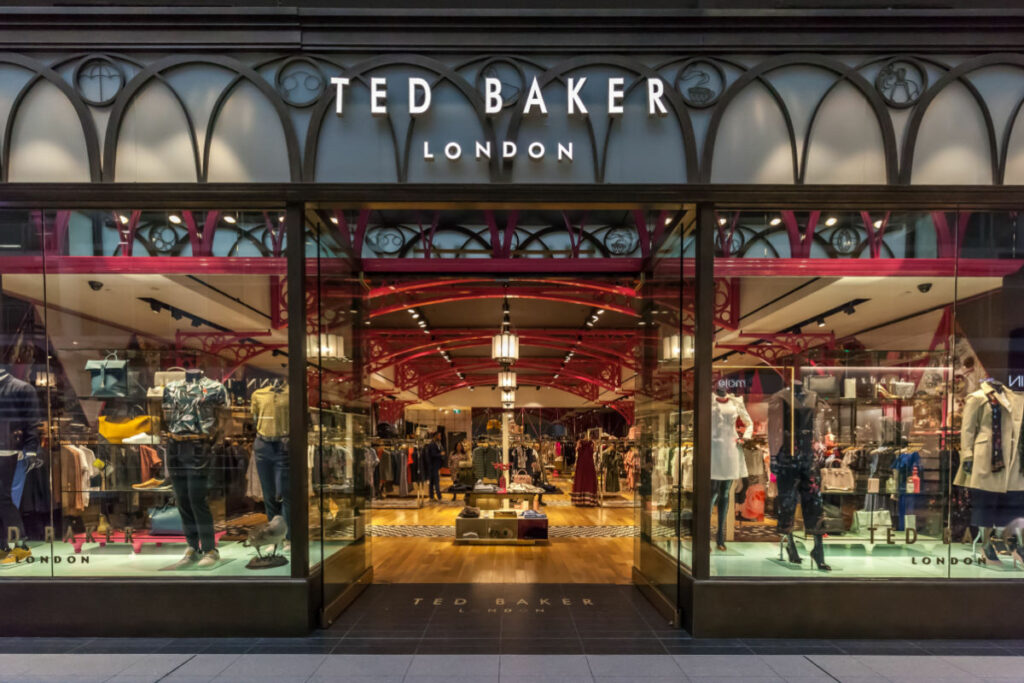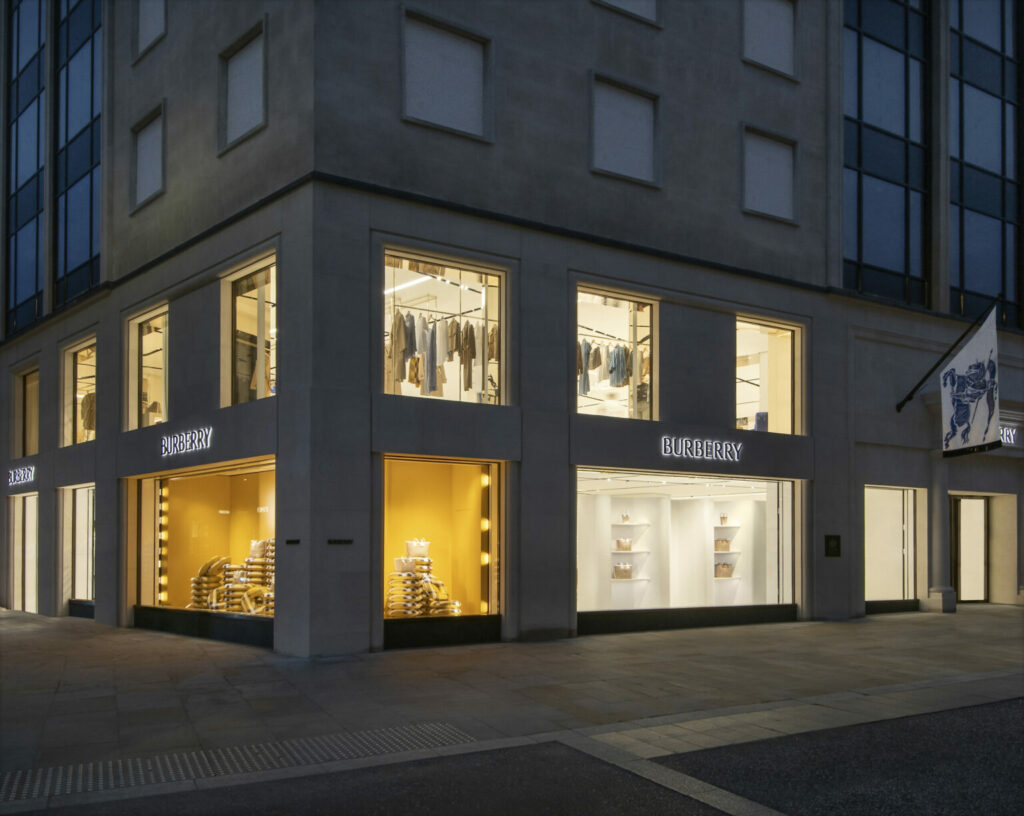A BRIEF TIMELINE
1990: Linda Bennett founded LK Bennett and opens the first store in Wimbledon, south-west London.
Bennett invests £13,000 of her savings and a £15,000 bank loan to open her first store.
The bank loan was repaid within three months of opening the store and the retailer soon became famed for its kitten-heel shoes.
1998: LK Bennett introduced its first ready-to-wear collection.
2000: International expansion begins, with the first overseas boutique opening in Paris.
2002: Bennett awarded the Entrepreneur of the Year Award by professional services firm Ernst and Young (EY), which ironically is the same company that is currently guiding LK Bennett through administration.
2006: Bennett awarded an OBE
2008: Bennett sells her majority stake in the chain to private equity firm Phoenix Equity Partners and former Jimmy Choo boss, Robert Bensoussan, for a value between £80 million and £100 million.
2012: The business begins to decline, with LK Bennett’s operating profits plummeting from £9 million to £3 million between 2012 and 2014
Duchess of Cambridge Kate Middleton was seen wearing a suit from the retailer at the first official engagement with the Queen during her Diamond Jubilee UK Tour.
During the year, Middleton wore LK Bennett’s Court shoes and the Natalie Straw clutch bag.
The Court shoes were priced at £175 at the time, but when the Duchess was pictured wearing them, the retailer increased the shoes’ and the bag’s price by £20.
2014: The retailer reshuffles management, with Robert Bensoussan becoming chief executive of LK Bennett on an interim basis.
Didier Drouet, who was appointed chief executive of LK Bennett in 2012, was dismissed by Bensoussan after he said Drouet had not managed stock or working capital well enough.
2016: In September, LK Bennett reveals its business had been loss making for the past two years.
Bensoussan stepped down as chief executive and was replaced by Darren Topp, whose first action was to request Linda Bennett’s comeback to the struggling retailer.
2017: In April, the retailer announced that Bennett would be returning to focus on product and brand development.
Bennett purchased a stake in the retailer she founded in September for £3 million. It effectively brought LK Bennett back under her ownership.
In its financial results, Companies House reported that LK Bennett suffered an operating loss of nearly £6 million on sales of £77.4 million in the year to July 29 2017. These are the most recent results available for the retailer.
At a pre-tax level, losses climbed to £48 million for the same period. This was due to corporate restructuring that involved writing off amounts owed by former group companies.
According to the accounts, Bennett invested about £11.2 million into the business on her return.
2018: Erica Vilkauls appointed as chief executive in March.
As of June, LK Bennett operated from 130 stores globally.
Online sales made up 33 per cent of total sales, stores 61 per cent and wholesale 6 per cent.
March 1, 2019: LK Bennett files a notice of intention to appoint an administrator after it struggled to find a new financial backer, putting almost 500 UK jobs at risk.
March 7, 2019: LK Bennett goes into administration.
The company’s customer service telephone line was closed in the afternoon, while its website wrote the message: “Thank you for visiting LK Bennett, we’re experiencing some issues but should be up and running again soon.”
The retailer appointed EY as administrators, who immediately closed five stores – Brent Cross and Westbourne Grove in London, plus Sheffield, Bristol and Liverpool. It added that 55 jobs had already gone at the retailer’s headquarters.
EY highlighted that LK Bennett’s international operations and stores were not included in the administration process.
Meanwhile, EY said LK Bennett’s UK stores will continue to operate as usual, although online sales are temporarily suspended to allow administrators to work with the company so that customer orders can be processed and delivered as usual.
EY cited rising business rates and rents for the company’s problems.
It was also said House of Fraser – which was bought out of administration in September by Mike Ashley – owed nearly £418,000 to LK Bennett.
THE REASONS
Since LK Bennett opened its first store in Wimbledon, London, it was quickly recognised as an upmarket retailer and 22 years later this was just as relevant as it became a favourite of Princess Kate Middleton. Prime Minister Theresa May has also been spotted wearing LK Bennett.
This prompted the retailer to increase its prices. However, both the Duchess of Cambridge and PM failed stop LK Bennett’s declining sales.
“Although they may have gained Prime Ministers and Duchesses as high-profile customers, the most recent Consumer Prices Index confirmed that the UK clothing and footwear sector saw price deflation of 1.3 per cent in the year to January 2019,” Nottingham Business School retail research associate Nelson Blackley told Retail Gazette.
“In this context, and given the current prolonged UK retail spending downturn, LK Bennett shoes at £175 and dresses at £225 were priced beyond the reach of most shoppers.”
LK Bennett also failed to embrace a sense of uniqueness and creativity as its products resembled fellow retailers Reiss and Hobbs, and were also pricier. David Gore, head of retail at IT service management company BJSS, said the retailer’s sales were “further impacted by a lack of distinctiveness”.
“LK Bennett shoes at £175 and dresses at £225 were priced beyond the reach of most shoppers.”
“LK Bennett lines are not suitably different from high street competitors such as Reiss and Whistles – both of whom are similarly or more competitively priced,” he said.
Blackley agreed with Gore.
“Many of their ranges did not provide a real point of difference from lower priced competitors, for example Phase Eight, Hobbs or Reiss,” he said.
Simon Underwood, business recovery partner at accountancy firm Menzies LLP, said LK Bennett failed to shift its business amid changing consumer behaviour.
“At a time of rapidly-changing consumer behaviour, the retailer’s sales are likely to have been impacted by a failure to update its original branding to stand out in an over-saturated market,” he told Retail Gazette.
Meanwhile, it could be argued that LK Bennett had too many stores, leading to high rent costs amid decreasing footfall.
Many of the stores were signed during a period of average to high consumer confidence, but the amount of sales the firm required for the stores to be viable became unlikely to achieve as its prices were not affordable for the high street.
Blackley said many of LK Bennett’s stores were on 10 to 15 year leases and were hit by significant rent increases on top of already high rents, together with business rate rises.
Underwood added that “rising business and property rates will have hit the retailer particularly hard” as around 60 per cent of LK Bennett’s business focused on bricks and mortar.
Colliers International looked at LK Bennett’s business rates bills for its 37 UK shops and estimated that these are now 26 per cent higher than before the 2017 revaluation.
“Many of their ranges did not provide a real point of difference from lower priced competitors.”
LK Bennett’s Jubilee Place, Bank Street store location had a business rates bill of £93,800 in its 2019/20 report, which is a 72 per cent increase on the previous bill of £54,800 for the 2016/17 report.
Another popular LK Bennett location at St Pancras International Station faced a business rates bill of £186,300 for 2019/20 – a whopping 101 per cent increase on the previous bill of £61,000 for 2016/17.
Meanwhile, another argument for LK Bennett’s decline is that it failed to connect with its young consumers via social media. Gore explains that because consumer behaviour is changing, it became apparent that the retailer overlooked its digital sector.
“Today’s shoppers expect digitally-relevant and engaged brands where being constantly on-trend on social media is the norm,” he told Retail Gazette.
“Consumer’s buy-now-wear-now mentality placed immense pressure on LK Bennett’s product development and lead times.
“They haven’t been able to compete with younger, more-affordable and digitally-savvier brands.”
Turon Miah, principal associate at law firm Gowling WLG, blames LK Bennett’s collapse on its strategy.
“The change of ownership of the business and various other changes in appointments to the board have meant that strategies have been in flux and not given the time to take root and come to fruition,” he told Retail Gazette.
The retailer aimed to achieve the recognition of being an affordable luxury brand, but Simon Bonney, partner at business advisory firm Quantuma, said the goal was one of the reasons for LK Bennett’s downfall. He said those who wanted to spend a considerable amount of money on a pair of shoes were “more likely to aim for a recognised high-fashion shoe brand, such as Jimmy Choo”.
“The accounts of LK Bennett begin with the strapline – ‘LK Bennett is the British affordable luxury brand’ – which is perhaps one of the main reasons that the business has ultimately run into difficulties,” he added.
“With the rise of cheaper retail chains stocking high and selling cheap, coupled with the increasingly squeezed middle classes, the idea of affordable luxury is perhaps a thing of the past.”
Retail Gazette has approached EY administrators for a comment.
Click here to sign up to Retail Gazette‘s free daily email newsletter

















